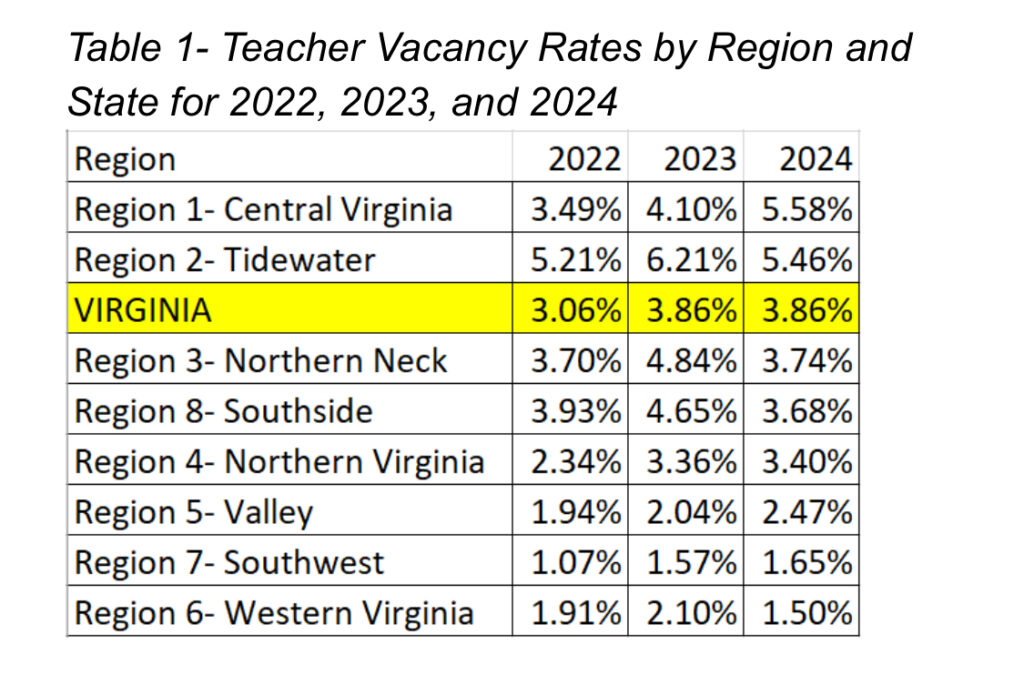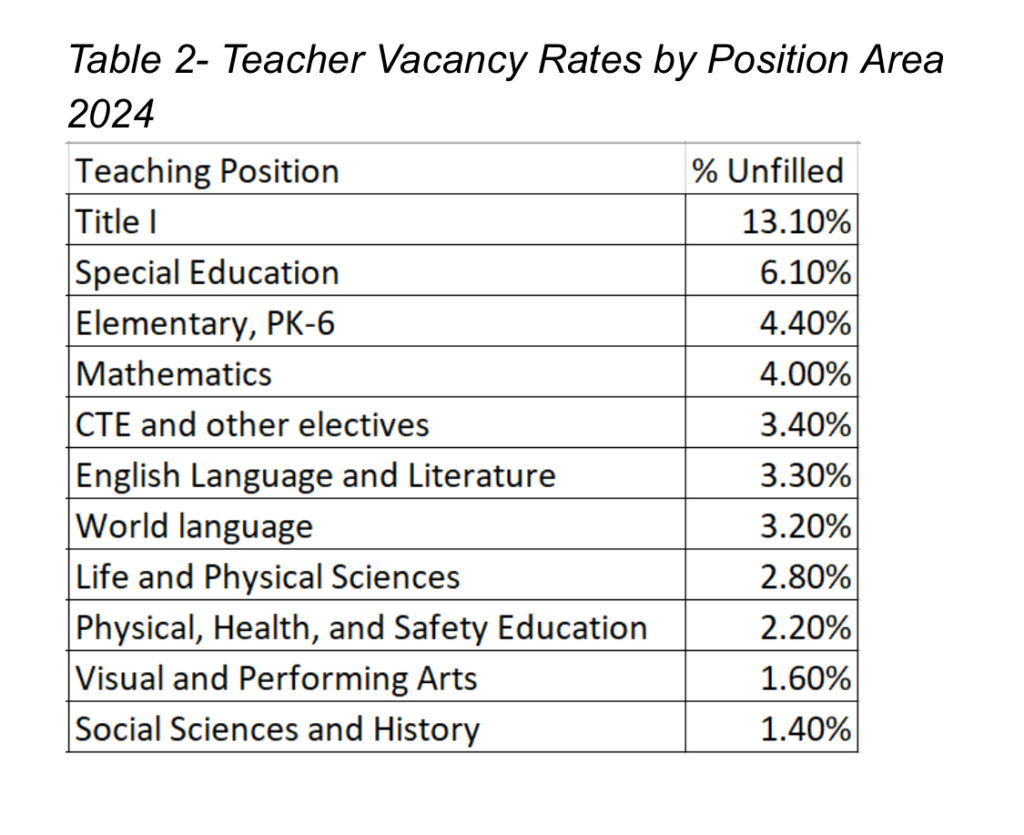by Matt HurtChris Braunlich (Bait and Switch: Reform Reverts to Mo’ Money) brought up many good points about some bills that propose to increase teacher salaries. However, it seems necessary to add some additional context to help flesh out this conversation/debate. It appears that many don’t fully understand the gravity of the situation.On paper, the teacher vacancy rates seems to have stabilized from 2023 to 2024 rather than increasing as they had in years prior. The data below were obtained from the Staffing and Vacancy Report Build-A-Table on the VDOE website, the dataset for which only dates back to 2022.
Table 2 below reports the teacher vacancy rates by position for the 2023-2024 school year. What is interesting about these numbers is the fact that Title I has the highest vacancy rate. Most Title I schools are elementary schools, so it is reasonable to assume that staffing for general classroom positions is prioritized over Title I positions. Given that elementary teaching positions have the third highest vacancy rate, it seems also reasonable to assume that the vacancy problem most negatively affects elementary schools. This seems very counterintuitive because years ago there was a line around the corner of fully licensed prospective teachers for every elementary position.

Unfortunately, these numbers don’t accurately reflect the entire problem. The vacancy data simply report the number of open positions that do not have a licensed person in place. These numbers do not differentiate between fully licensed and provisionally licensed teachers. Anecdotally, I hear colleagues talking about the fact that more and more new teachers haven’t gone through the traditional teacher preparation programs (which lead to full licensure), and they feel that this has detrimental effects on our students’ learning. JLARC reported in 2022 (page 9) that the percentage of fully licensed teachers dropped from 94% in 2013 to 84% in 2023.
Also, many divisions across the state are trying to fill positions by contracting with companies who hire and bring over teachers from foreign countries. These positions are filled on a temporary basis due to visa requirements. Foreign teachers face a significant culture shock as students and parents in our country do not have the same respect for teachers as they are accustomed to in their home countries. Teaching positions filled by these temporary teachers are also considered filled and do not count in the vacancy rate numbers.
In conclusion, I agree with Chris’s position that across-the-board pay raises won’t fix all of Virginia’s educational woes. It won’t ensure that traditionally hard-to-staff schools will be fully staffed. It won’t by itself ensure that students will become more proficient. However, increasing teacher salaries across the board will entice more folks into the teaching field through traditional programs which yield full licensure, which is desperately needed. Virginia students deserve teachers who want to be in the profession enough to enter through teacher preparation programs. We cannot continue to fail to address teacher shortages and hope that this problem will fix itself. The only way that we can entice more folks into the field is by making teaching jobs more competitive from a compensation standpoint. How we accomplish that is well above my pay grade.
Matt Hurt is the director of the Comprehensive Instructional Program, based in Wise, Virginia.

Leave a Reply
You must be logged in to post a comment.